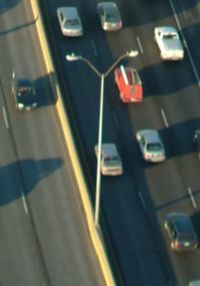901.9 Layout
Jump to navigation
Jump to search
The following basic rules are applied to the geometric layouts for highway lighting at interchanges and intersections:
- Poles are not placed past the nose where a ramp leaves the thruway, nor within 35 to 50 ft. of an overhead sign structure. Such points, as well as the noses of raised divisional islands and channelizing islands with non-mountable curbs, are lighted by direct reflectance, rather than by silhouette discernment, with a luminaire placed in front of the nose and to the right of an approaching vehicle as shown in the figures in EPG 901.1 Lighting to be Provided, Operated, and Maintained at State Expense. For direct reflectance and silhouette discernment lighting at intersections it is important luminaires be oriented properly as shown in the figures, otherwise the effectiveness and the distribution of the lighting is compromised.
- If a bridge is within a continuously lighted area, luminaires are required to the right of the approaching vehicle and in advance of the bridge end.
- If a bridge can be lighted to approximately the designed intensity in accordance with the previous bullet, a luminaire is not necessary on the structure. When necessary to locate lighting poles and luminaires on a bridge, it is advantageous to locate those units over bearing points or bents to lessen detrimental effects of vibration.
- • Where continuous lighting is not being designed, the transition at the end of an acceleration lane or the beginning of a basic or auxiliary lane at an on ramp is lighted. One LED-B luminaire mounted at 45 ft. is installed at the end of the acceleration lane at the point where the lane is full lane width. Two LED-A luminaires mounted at 30 ft. can be substituted for this luminaire but this substitution is not recommended. If used, one luminaire is installed at the point where the lane is full lane width and one at the point where the lane is about 5 ft. wide, but not less than 125 ft. apart. See Figure 901.7.5 for additional information.
- On continuously lighted sharp ramp curves, poles are required on the inside of the curve for safety reasons. Luminaires mounted on the inside of sharp curves are spaced 0.55 times the normal horizontal spacing, and those on the outside at 0.70 times the normal horizontal spacing.
